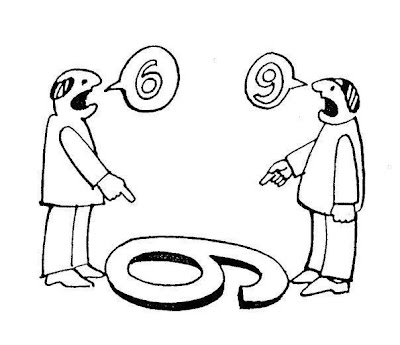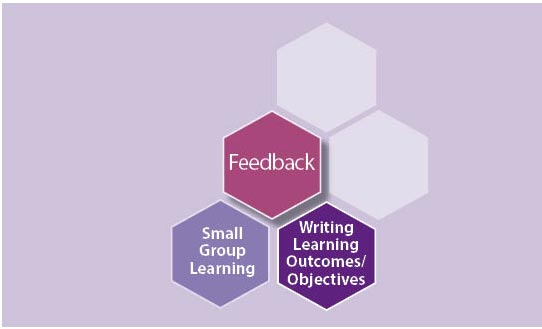Introduction
Fundamentally, feedback is information. The better the feedback the better the outcome. The outcome is learning, improvement, or "formation" (related to "information"). Recently, meta-analyses of hundreds of studies and hundreds of thousands of students show that, on average, feedback is ranked among the top five effective teaching and learning strategies.2 That’s a powerful advantage we don’t want to miss.
Feedback is part of the educational process of helping people learn that comes after the teaching and initial learning occur. Feedback helps recipients figure out how they are doing so they can either continue doing what they are doing well or take corrective action. Feedback can be accepted, modified, or rejected by the recipient. Therefore, it is important not only to formulate effective feedback, but to deliver it in a way that will be considered and can help the learner. Unfortunately, there are few evidence-based recommendations regarding the best way to deliver feedback in a medical education context.3 What we present in this Cell is a consensus view of best practices in delivering feedback and research from education generally.4
Learning Outcomes for the CORAL Cell on effective feedback
(what you can reasonably expect to learn in the next 15 minutes):
- Describe the elements and characteristics of effective feedback (content and delivery).
- Critique examples of feedback (content and delivery) based on known characteristics of effective feedback.
- Given a scenario, plan for and compose reasonably-effective feedback (content and delivery).
To what extent are you now able to meet these outcomes? Please record your self-assessments. (1 is not at all and 5 is completely)
Before we get started, consider for a moment effective feedback you received as a learner. What features or characteristics seem to be important and valuable?
Learning about effective feedback
Effective feedback (content and delivery) needs to be:
- Specific
- Individualized
- Timely
- Balanced
- Accurate
- Clear (and understandable)
- Kind
Sit back and engage in feedback. Have a conversation. Establish psychological safety. The relationship should be collaborative and collegial, not adversarial. Both the person giving the feedback and the one receiving it should feel like they are on the same team working for the same goals, and doing their best to learn, grow, and develop. Feedback is more than the content; the context and delivery is just as important. Feedback is often associated with criticism. Correction and critique are in fact frequent components of feedback and can be very successful if delivered well, without humiliation and intimidation. Below we give seven features of effective feedback.5-7
Specific: The information needs to be specific to the situation. What happened exactly? What went wrong and what went right, precisely? Not, "You don't seem to be very good at clinical reasoning" but, "You did not notice that this person had a mild flu and not a head cold". Not, "You don't suture very well" but, "The angle at which you hold the needle does not seem to be working. Try this instead."
 Individualized: Feedback, as with any attempt at teaching, is best if it is modified for the unique situation of the individual learners. What is the person's prior knowledge or skill level? What is it that this person needs to learn now or next? Not, "The residents don't seem to have the background knowledge needed at this level" but, "You don’t seem to know how to accurately classify fractures in the pediatric population" or "You did not seem to know the difference between and clinical significance of Type II and Type III Salter-Harris fractures."
Individualized: Feedback, as with any attempt at teaching, is best if it is modified for the unique situation of the individual learners. What is the person's prior knowledge or skill level? What is it that this person needs to learn now or next? Not, "The residents don't seem to have the background knowledge needed at this level" but, "You don’t seem to know how to accurately classify fractures in the pediatric population" or "You did not seem to know the difference between and clinical significance of Type II and Type III Salter-Harris fractures."
Timely: Allow time for learners to process what happened but don't wait so long that they (and you) forget what happened. Consider asking the learner their version of the task and their opinion of their performance.
 Balanced: Both what needs to improve AND what people are already doing well (so they will continue) are legitimate components of any feedback. Feedback about what went well also needs to exhibit the characteristics of effective feedback. Diffuse, undifferentiated praise is at best ineffective (what do they continue to do) and at worst destructive (creating praise seeking behaviours and dependence).
Balanced: Both what needs to improve AND what people are already doing well (so they will continue) are legitimate components of any feedback. Feedback about what went well also needs to exhibit the characteristics of effective feedback. Diffuse, undifferentiated praise is at best ineffective (what do they continue to do) and at worst destructive (creating praise seeking behaviours and dependence).
Accurate: This does not mean brutally blunt or inhumanely invective. Feedback is not an outlet for crushing criticism. It does not mean just speaking your mind. It means reconstructing with the learner what happened then working with the learners to figure out why it happened (good and bad) and then what they can do about it. It means getting an accurate history, making a reasonable diagnosis based on evidence, and then coming up with a plan to address any issues. By all means, give the facts, but not your (potentially flawed) interpretation of those facts. It might be a simple case of different perspectives (e.g., a 6 or 9, depending on your line of sight). Both or multiple opinions might simultaneously be correct. Furthermore, judgments of worth and personal value are not appropriate feedback. "You will never be a good doctor" may seem accurate to you (we should not believe everything we think) but it may not be true (and likely isn't). Again, because this is such an important point, here is another example: Rather than saying "You seemed embarrassed." you could describe the behaviour that led to the inference: "You seemed to turn away" or, "You seemed to flush a bit." Or you could simply ask the learner how they felt during the encounter. And even if you do everything right, you are still going to be biased, either a little or a lot. It is the human condition. Nothing is completely non-judgmental. The best we can hope for is to minimize the biases and judgment and be willing to address these when they come up.
Clear (and understandable): Your language and vocabulary need to be understood by the recipient. Feedback can be direct and need not be the flowery language of diplomacy. Adapt the language to the learner so that they really know what you are saying.
 Kind: Cultivate a positive relationship, even if only briefly. Establish psychological safety. People accept feedback better when they know people are trying to help them and genuinely want them to do well. Show the learner that you are on their side, helping them to succeed.
Kind: Cultivate a positive relationship, even if only briefly. Establish psychological safety. People accept feedback better when they know people are trying to help them and genuinely want them to do well. Show the learner that you are on their side, helping them to succeed.
Concluding remarks:
Feedback can be very effective and is in fact necessary for learning. But it is not sufficient. Feedback, notwithstanding its power and prevalence, is not a panacea for learning.
"It is important to note, however, that under particular circumstances, instruction is more effective than feedback. Feedback can only build on something; it is of little use when there is no initial learning or surface information. Feedback is what happens second, is one of the most powerful influences on learning, too rarely occurs, and needs to be more fully researched by qualitatively and quantitatively investigating how feedback works."4
Check for Understanding
Self-Assessment

Thank you for completing this CORAL Cell. We are interested in improving this and other cells and would like to use your answers (anonymously of course) along with the following descriptive questions as part of our evaluation data.
Thanks again and please come back soon!
The CORAL Cell Team
Credits:
Authors: Marcel D’Eon, (University of Saskatchewan); Sean Polreis, (University of Saskatchewan)
Series Editor: Marcel D’Eon
Reviewers/consultants: Cathy MacLean (University of Saskatchewan), Brent Thoma (University of Saskatchewan), AJ Kleinheksel (Medical College of Georgia, Augusta University)
References
1 Coral Bing. Creative Commons
2 Hattie, J. A. (1999, June.). Influences on student learning (Inaugural professorial address, University of Auckland, New Zealand). Retrieved from http://www.arts.auckland.ac.nz/staff/index.cfm?P=8650 but no longer available.
3 Bing-You, R., Hayes, V., Varaklis, K., Trowbridge, R., Kemp, H., & McKelvy, D. (2017). Feedback for learners in medical education: What is known? A scoping review. Academic Medicine, 92(9), 1346-1354.
4 Hattie, J., & Timperley, H. (2007). The power of feedback. Review of educational research, 77(1), 81-112.
5 Rudolph JW, Raemer DB, Simon R. Establishing a safe container for learning in simulation: the role of the pre-simulation briefing. Simulation in Healthcare. 2014 Dec 1;9(6):339-49.
6 Instructional Skills Workshop International Advisory Committee 2006. Instructional Skills Workshop Handbook for Participants.
7 Vickery, A. W., & Lake, F. R. (2005). Teaching on the run tips 10: giving feedback. Medical journal of Australia, 183(5), 267.
8 New dolly dresses! Bing. Creative Commons. https://c1.staticflickr.com/4/3093/5746582787_3364df9845_n.jpg Accessed July 19, 2019
9 Feedback y perspectivisma Bing. Creative Commons https://www.cuestiondeideas.com/wp-content/uploads/2014/04/punto-de-vista.jpg Accessed July 19, 2019
10 Helping hand Bing. Creative Commons https://cdn.pixabay.com/photo/2017/08/18/15/00/help-2655258_640.png Accessed March 26, 2020.
Further reading:
Clinical Teaching Techniques - Competency Based Medical Education
http://www.royalcollege.ca/rcsite/cbd/implementation/wbas/coaching-and-cbd-ee
